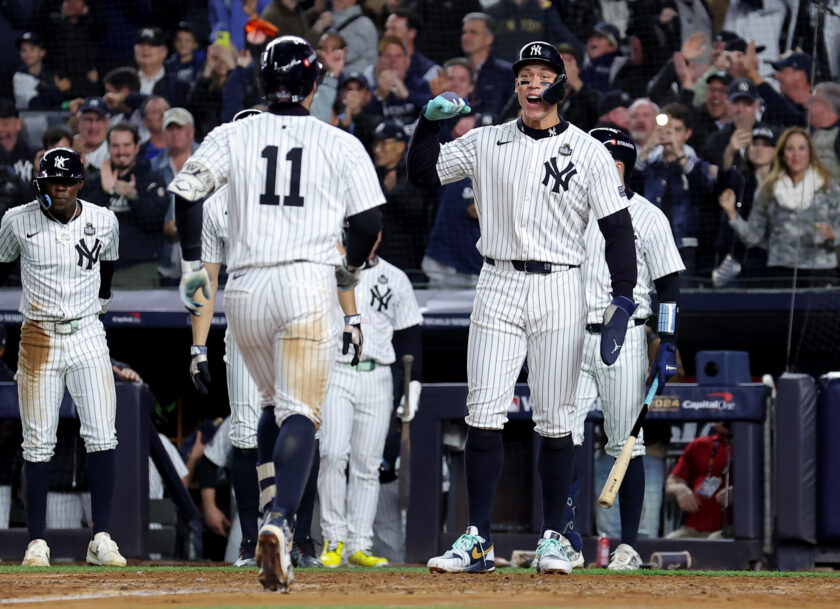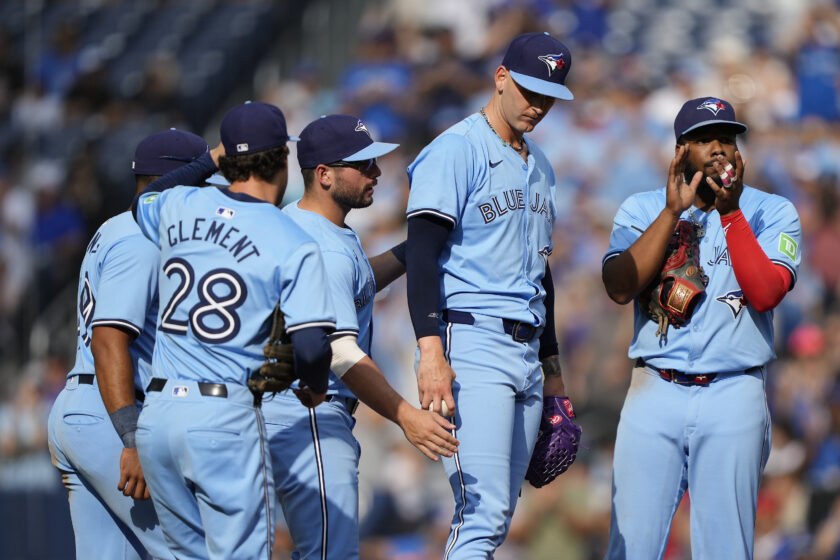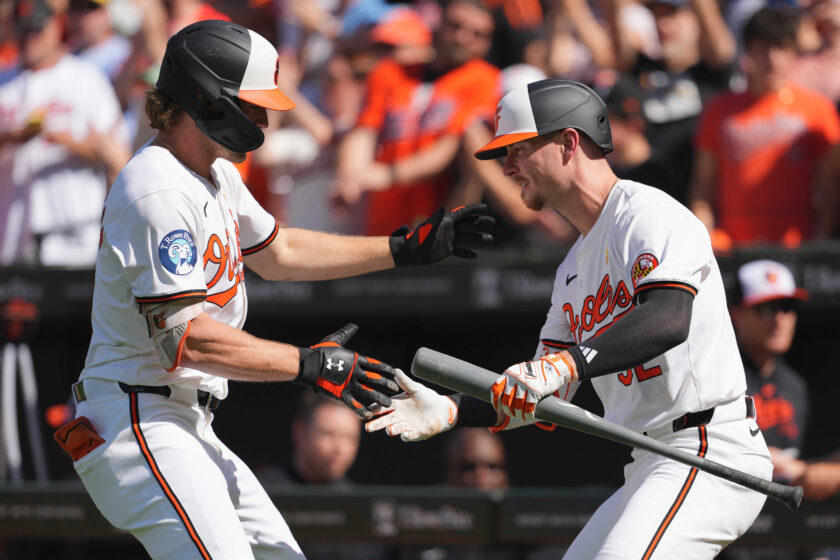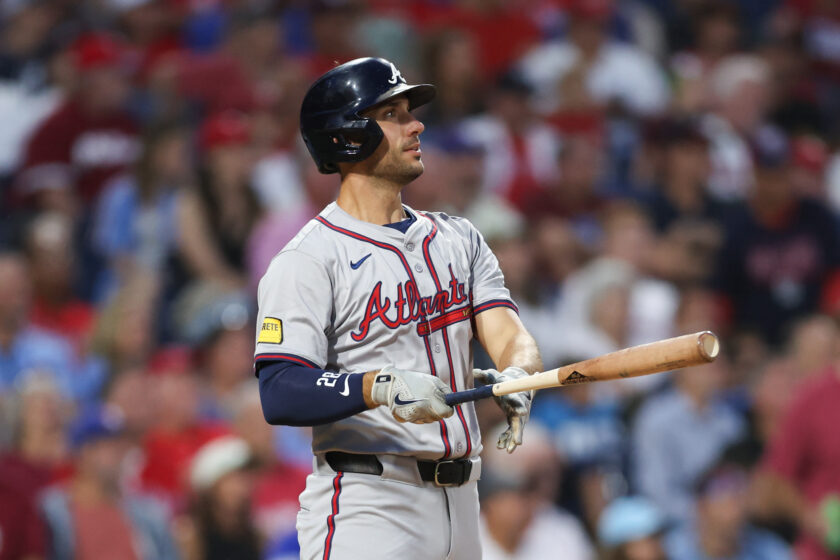ESNY’s NHL Season Preview: Can the Capitals repeat?
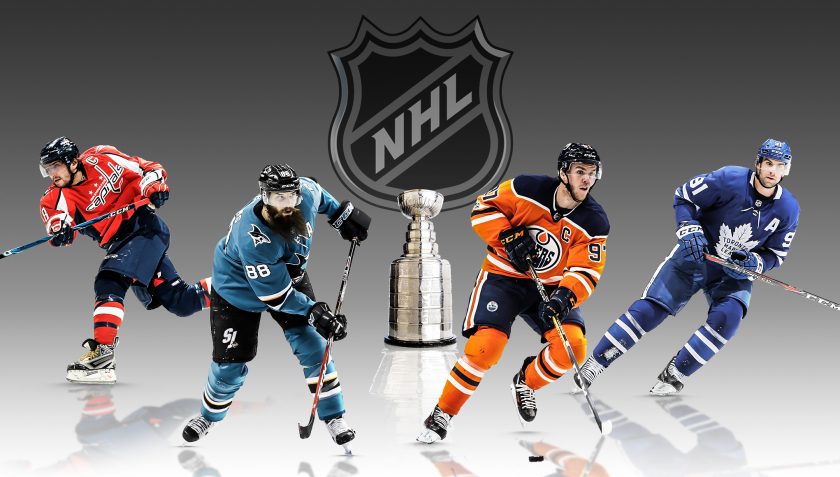
[sc name=”NHL Title” text=”Anaheim Ducks”]
To much of everyone’s surprise, the Ducks managed to defy injury to claim yet another 100+ point season only to be swept in the first round by the San Jose Sharks, a firm sign that their championship window has closed shut.
Ryan Kesler is already set to miss significant time from offseason hip surgery and there isn’t much optimism for the Ducks at center past Adam Henrique. Top prospect Sam Steel is poised to make his NHL debut, but it’s unlikely raw potential alone will save the Ducks from their center issues.
While Ryan Getzlaf had a pretty solid regular season with 61 points, Corey Perry’s numbers have taken a notable dip down to 17 goals and 49 points. Neither player did much of anything in the playoffs, with two assists from Getzlaf and nothing — nothing — from Perry in four games.
Rickard Rakell is most definitely the driving force on offense for the Ducks, but he can’t do it alone. For a group that ranked 18th overall last season in goals-for, there was nothing done on the open market or via trade to bolster their offense.
The good news is that defensively, the Ducks will be just fine. A very well balanced group led by Cam Fowler and Hampus Lindholm should keep the Ducks in the top five in the NHL in goals-against.
It would be good to improve on finishing 26th overall for shots allowed, but John Gibson between the pipes alone gives them some of the best goaltending in the NHL when he’s healthy.
The Ducks will once again rely on their strong defense and John Gibson to help guide them to another post-season berth. This time, when the injury bug eventually hits, the Ducks won’t have the depth necessary to plug their deficiencies and will miss the playoffs for the first time since the 2011-12 season.
[sc name=”NHL Title” text=”Arizona Coyotes”]
If the Coyotes can play the way they did from January through the rest of the 2017-18 season, there’s a good chance they can make the playoffs.
Imagine hearing that when the Coyotes were 2-15-3 on Nov. 14, 2017.
Antti Raanta’s struggle to stay healthy early in the season made adjusting to Rick Tocchet’s system a sloppy process. The Coyotes tried to make up for Raanta’s absence via Louis Domingue, but eventually waived the goaltender and traded for Scott Wedgewood before subsequently moving on from him as well.
The Yotes traded Wedgewood and Tobias Rieder to the Kings for Darcy Keumper to hopefully curb the implosion that can occur if Raanta misses extended time again.
Once Raanta did return in mid-November, he found his footing. From January 1 until the end of the season, Raanta posted a .942 save percentage with a 1.84 goals-against average — the best in the NHL during that span.
The emergence of Clayton Keller gives the Yotes another piece to build around after re-signing Oliver Ekman-Larsson to an eight-year contract and provides more firepower up front.
Speaking of, the Desert Dogs acquired Alex Galchenyuk this offseason which will help ease the burden at center for Derek Stepan and can hopefully push Dylan Strome to break through at the NHL level.
Vinnie Hinostroza joins the Yotes after being traded by the Chicago Blackhawks. At just 24-years-old, Hinostroza played 49 and 50 games in each of the last two seasons, so he’s part of their growth going forward.
After finding another gear to switch to in the 2016-17 season, Michael Grabner is a 20-goal scorer once again with 27 in each of his last two seasons and will provide a boost to the third or second line, if need be.
At the worst, this Coyotes team is good enough to contend for a wild-card spot in a very skewed division. Playoffs may not happen this season for the Coyotes, but they will be a contending team in the very near future, they’re close.
[sc name=”NHL Title” text=”Calgary Flames”]
After doing a swap in their core with the Carolina Hurricanes, the Calgary Flames are reloaded and looking to continue their trend of making the playoffs for the third consecutive time after missing the season prior.
The Calgary Flames fell flat in the last two months of play last season to derail an otherwise pretty good year.
Johnny Gaudreau set a career-high in points with 84, Matthew Tkachuk re-signed almost immediately, guaranteeing he sticks around after his entry-level contract expires.
While they lost Dougie Hamilton and Michael Ferland, receiving Elias Lindholm is a boost in depth scoring for the Flames and Noah Hanafin is a 21-year-old defenseman with three seasons of play already under his belt.
GM Brad Treliving also signed James Neal to a five-year contract after Neal played a huge part in the Vegas Golden Knights run to the Stanley Cup Final. As Neal enters his leaner years at 30 years old, he doesn’t have the pressure to be a top-six scorer — especially with the Flames’ top-six — and can comfortably net at least another 20 next season.
The replacing of Glen Gulutzan and his staff with Bill Peters, Geoff Ward, and Ryan Huska puts an emphasis on their defensive issues.
Goaltending has been an issue for Calgary ever since the departure of long-time netminder Miikka Kiprusoff, and that won’t change for them this season. Mike Smith’s start to the season was great – probably better than expected for the (then) 35-year-old netminder: a .920 save percentage through 33 games.
It was the last 22 games in the second half of the season that buried the Flames and his numbers with a .910 save percentage in that span. A stabilized defensive group should help Smith’s numbers down the stretch, but the Flames will need more consistency as the year goes on for the veteran goaltender, especially entering the season at 36 years old.
All in all, expect the Flames to enter this season with renewed vigor from a boost to their depth scoring and defensive structure. Bill Peters will tighten up their systems play and put the Flames back into the playoffs once again.
[sc name=”NHL Title” text=”Edmonton Oilers”]
The Edmonton Oilers had sky-high expectations after an exciting 2016-17 and even entered the season as cup contenders, only to be well on the outside by Dec. 1 with a 10-14-2 record and finish 17 points from a playoff spot.
There were several factors to blame for the Oilers magnificent rise and even more puzzling fall.
Firstly, their special teams were far from special. For a team as offensively gifted with Connor McDavid, Leon Draisaitl, Milan Lucic and Ryan Nugent-Hopkins to name a few, they had the league-worst powerplay at 14.8 percent. Their penalty-kill fared only a little better with a 25th overall finish at 76.7 percent.
Like the Flames, the Oilers were a top-heavy team with the majority of their firepower coming from their top-six. Balanced scoring is needed from players like Jesse Puljujarvi who had 20 points in 65 games last season and Ryan Strome, who has continued to struggle since his inaugural 50-point season.
Milan Lucic was also a shell of his 2016-17 self, dipping from 50 to 34 points and 23 to 10 goals respectively. Despite scoring 26 points in the first 39 games, Lucic’s production nosedived in his last 44 games with just a single goal and eight points for the rest of the season – a telling sign that confidence, not skill was the issue for him last season. Expect a renewed effort from Lucic this season.
Darnell Nurse has a golden opportunity to play a huge role with the Oilers next season after signing a two-year bridge deal after a tense offseason stalemate. Nurse led all Oilers defensemen in scoring with six goals and 26 points and will look to take another step forward by reinforcing the Oilers’ top-four.
Cam Talbot is looking for a rebound year as well after his save percentage dipped from .919 in 2017 to .909 in 2018. Talbot’s start to the season was a rocky .905 save percentage and 2.83 goals-against average. It wasn’t until February when Talbot finally started regaining some consistency, with a .916 save percentage through his final 28 games of the season.
The Oilers haven’t changed much in their approach, and it’s unclear if that can lead to better results. Talbot will definitely be better, as should Lucic, but the Oilers have a questionable bottom-six, and in the modern NHL contribution has to come from all four lines.
Though improvement is expected, it will likely not be enough to carry them back to the post-season in 2019.
[sc name=”NHL Title” text=”Los Angeles Kings”]
The Los Angeles Kings’ window slammed shut last season, but they’ll do everything in their power to force it open for one last year.
After being swept by the Knights’ in last season’s opening round of the Stanley Cup Playoffs, the Kings’ lack of offensive depth was exposed after their veterans could do little to impact their team’s fate in the post-season.
To address the issues the Kings signed Ilya Kovalchuk – someone who hasn’t played in the NHL since 2013 — to a three-year deal worth $6.25 million per season.
That isn’t a knock to Kovalchuk or his capabilities, it’s likely the forward can at least return to the 20-goal, 40-point mark once again. The Kovalchuk signing is more indicative of a team in denial that they just aren’t good enough as they stand.
It’s worth pointing out that the Kings lost Jeff Carter six games into the season. When he returned, he posted 19 points in 21 games – a promising sample for the Kings’ second-line center. Carter should be good for another 60 points next season if he can stay healthy.
Beyond Carter, Michael Amadio should be looking towards extended bottom-six responsibility. In his first NHL season, he scored four goals and eight points in 37 games. The 22-year-old will look to build on getting his first taste in the NHL and fortify the Kings’ much-needed depth scoring.
The Kings were arguably the league’s best team defensively finishing first overall in goals-allowed and in the penalty-kill. Jonathan Quick had another terrific season with a .921 save percentage and even posted some of his best post-season numbers in a four-game sample against the Knights. He was far from the reason the Kings were swept in the opening round.
It’s due to their strong defense that favors the Kings playoff chances, but realistically, this is a team that should be looking to transition out of an era of players, not keep their closing window open one more year.
This is the path the Kings have chosen, and, it realistically, isn’t enough to push them into the post-season.
[sc name=”NHL Title” text=”San Jose Sharks”]
The San Jose Sharks are one of the best-balanced teams in the NHL between their core of young players and veterans, and acquiring Erik Karlsson this-past offseason puts them as the Stanley Cup favorites heading into the season.
As Peter DeBoer told his team during their first full practice, “Our time is now, our window is now.”
Sharks GM Doug Wilson promised his team he would set out to acquire a big name this offseason, and after narrowly missing out on the John Tavares sweepstakes he made sure not to miss twice with Karlsson.
After adding Evander Kane at the trade deadline, he re-signed with the Sharks for seven years at $7 million per giving an extended boost to the Sharks’ top-six. An already strengthened core could see a further boost from rookies like Timo Meier, who scored 21 goals and 36 points last season. Antti Suomela is looking to crack the Sharks’ lineup next season too, as the most viable replacement for the departed Chris Tierney.
There isn’t much that needs to be said from the Sharks offensive core. Joe Pavelski should post another high-60, low-70 point season, Joe Thornton should return one-hundred percent healthy and is still very much capable of a 50-point season and Logan Couture found a home alongside Pavelski.
The addition of Karlsson should provide a jump in the Sharks’ power play, which finished16th overall last season, to well within the top 10 if not the top five.
With Martin Jones’ stable presence in net and history of post-season success, the Sharks are looking towards a long year and a short summer in 2019 with a Stanley Cup parade in June.
[sc name=”NHL Title” text=”Vancouver Canucks”]
An optimistic start at the beginning of the season eventually turned sour for the Vancouver Canucks last year, who will look to continue building the foundation of a new chapter in their history.
Now that both Henrik and Daniel Sedin retired, this is Brock Boeser’s team. An unfortunate injury derailed what could have likely been a 40-goal season for Boeser, but there’s no doubt he can easily bounce back.
A nasty rash of injury hit the Canucks hard last season, along with Boeser missing about a month Bo Horvat suffered a broken ankle and missed a month and a half while Sven Baertschi had two separate bouts of injury which kept him out for a total of nearly two months.
The Canucks, more than arguably any other team, will continue to emphasize growth in their players. Heavy minutes of playing time in key situations should help their kids continue to develop. That goes as much for the aforementioned players as well as their young roster-hopefuls in guys like Brendan Leipsic and Adam Gaudette.
Of course, the team added another piece to their core in Elias Pettersson and the expectations will be on him to have a lights-out rookie year. He led the Swedish League in scoring with 56 points in 44 games and was named league MVP and top rookie en route to a championship season. Pettersson is in prime position to win the 2019 Calder Trophy if even half of his success overseas follows him into the NHL.
That said, growth is something that must be emphasized team-wide, with veterans like Sam Gagner taking a step back and Loui Eriksson with a huge step back from his 63-point season in 2015-16. In the last two years combined, Eriksson couldn’t even tie his total from two years ago with 47 points. Both him and Gagner (who had a 19-point deficit last year vs. his previous season with Columbus) need to look ahead to more gradual improvement.
The big question for the Canucks is Jakub Markstrom, who at 28-years-old has struggled to maintain consistency in parts of five seasons with Vancouver. His 60 games played last season is his most ever, ending with a .912 save percentage and a 2.71 goals-against average – just about league average.
The 2018-19 season will be the biggest in his career, with the workload firmly resting on his shoulders it’s time for him to put-up or shut-up. With Thatcher Demko knocking on the door and waiting for his inevitable call-up, the least Markstrom can do is put himself in a position to continue his NHL career for as long as he can.
As one can assume, this season is about development for a Canucks team in transition. Even if they overachieve in every aspect, this is a Canucks team whose focus is not on immediate success and will have a lot to digest on the outside looking in.
[sc name=”NHL Title” text=”Vegas Golden Knights”]
The Knights started the 2017-18 season 8-2-0 in their first 10 games, and no, it didn’t slow down from there. At all.
Riding two-thirds of the Florida Panthers’ 2016 top line, Marc-Andre Fleury, and the leadership from Gerard Gallant, the Knights embarked on a journey that brought them all the way to the 2018 Stanley Cup Final.
Unfortunately for them, Game 1 of the Stanley Cup Final is where the journey would end as they dropped four-straight games to the Washington Capitals — their worst losing streak in franchise history.
From inaugural season puns to their roster, not much has or will change for the Knights next season, and that isn’t necessarily a bad thing. While they bid farewell to James Neal and David Perron, they also welcome new-found center depth in both Paul Stastny and Max Pacioretty.
Truthfully, it would make sense to bet against Vegas heading into next season. The statistical probability that the majority of their forwards will continue to grow is overwhelming given how many players had career seasons.
Then again, all they have done since joining the league is defy every stat in the books. Newfound depth at center will maintain a potent offense and a returned-to-form Marc-Andre Fleury will help the Knights keep things trending upwards next season.
Their lone concern lies at D, where on paper things could get very thin very quickly if Brayden McNabb can’t lead a defensive group comprised of Deryk Engelland (who will turn 37 this season) and two young guns in Shea Theodore and Colin Miller.
Without the services of Nate Schmidt until Nov. 18, a quick injury or two could force the Knights into a rough situation.
Regardless of that, they will compete once again next season without a doubt. T-Mobile Arena has quickly become one of the most hostile venues in the NHL, and the Vegas fans are ready for another deep playoff run.
[sc name=”NHL Title” text=”Final Standings”]
- San Jose Sharks (110 points)
- Vegas Golden Knights (104 points)
- Calgary Flames (97 points)
- Los Angeles Kings (94 points)
- Arizona Coyotes (90 points)
- Anaheim Ducks (87 points)
- Edmonton Oilers (84 points)
- Vancouver Canucks (75 points)
ESNY staff reports.

